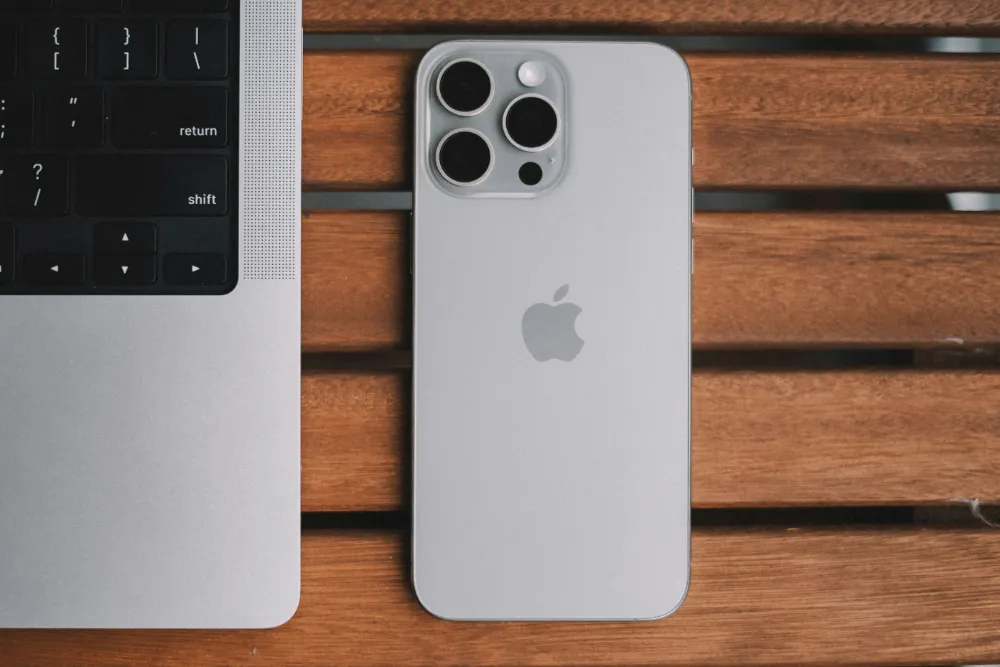eSIM
Is iPhone 15 eSIM Only? What You Need to Know
The iPhone 15 series represents another step in Apple’s gradual shift away from physical SIM cards—but exactly how far they’ve gone depends on where you live.
The eSIM-Only Reality for US iPhone 15 Models
Yes, all iPhone 15 models sold in the United States are eSIM-only. There’s no physical SIM card tray on any US variant—whether you’re getting the standard iPhone 15, iPhone 15 Plus, iPhone 15 Pro, or iPhone 15 Pro Max. This continues the approach Apple started with the iPhone 14 lineup in 2022, when US models first went fully digital with SIM technology.
But what exactly is an eSIM?
It’s essentially an embedded, digital version of the traditional plastic SIM card we’ve used for decades.
Instead of physically inserting a small card into your phone, an eSIM is built directly into your device’s hardware and can be activated digitally—no paperclip required.
The situation looks different if you’re purchasing an iPhone 15 outside the US, though. In most other countries, iPhone 15 models still include the familiar physical SIM tray alongside eSIM functionality. This regional difference reflects varying levels of eSIM adoption and infrastructure around the world, with the US market being further along in the transition.
As for carrier support, all major US providers have fully embraced eSIM technology. Setting up your new iPhone 15 with these carriers is generally seamless.
However, if you use a smaller carrier or an MVNO (Mobile Virtual Network Operator), it’s worth checking their eSIM compatibility before purchasing. While most have adapted by now, there are still some stragglers in the market.
Practical Implications for iPhone 15 Users
The shift to eSIM-only brings several benefits that might not be immediately obvious.
For one, eSIMs are generally more secure than physical cards, which can be lost, damaged, or stolen.
There’s also the convenience factor—you can store multiple eSIM profiles on a single device and switch between them without hunting down that tiny SIM ejector tool.
The activation process is typically more streamlined too. Rather than waiting for a physical card to arrive in the mail, you can often set up your service instantly through a carrier app or by scanning a QR code. Apple has also pointed to environmental benefits, as eliminating the physical SIM tray allows for some internal space savings and reduces plastic waste.
But the biggest concern for many users—and rightfully so—revolves around international travel. If you’re a frequent traveler with a US iPhone 15, you might be wondering: “How will I use local SIMs when abroad?”
While you can’t pop in a local physical SIM card anymore, you do have alternatives.
Many international carriers now offer eSIM options, and there’s a growing market of travel eSIM providers like eSIM4.com that cater specifically to travelers.
These services let you purchase and activate a data plan for your destination before you even leave home—sometimes at rates that beat traditional international roaming.
Another common worry involves switching carriers.
The good news is that transferring your service to a new provider with eSIM is typically straightforward and can often be completed entirely online. Most carriers have specific instructions for transferring your number via eSIM, though the exact process varies by provider.
Navigating the eSIM Landscape
Setting up an eSIM on your iPhone 15 is surprisingly simple. In most cases, your carrier will guide you through the process during activation, which might involve scanning a QR code, using a carrier app, or entering information manually.
Your iPhone can store multiple eSIM profiles—up to eight active ones at once—though you can only use one or two simultaneously (depending on your model).
To add an eSIM, go to Settings > Cellular > Add Cellular Plan, then follow the on-screen instructions. If you’re switching iPhones, iOS’s Quick Start feature can transfer your eSIM profiles from your old device to your new one.
For international travelers with US iPhone 15 models, specialized travel eSIMs offer a compelling solution.
Services like eSIM4 provide predetermined data packages for international destinations, often at significantly lower costs than traditional carrier roaming fees.
The process typically involves purchasing a plan online, receiving a QR code via email, and scanning it with your iPhone to install the eSIM profile—all before you even board your flight.
“Do I turn off roaming when using an eSIM?” is a question many travelers ask. We recommend you do.
If you’re using a travel eSIM as your data line while keeping your home carrier’s eSIM active for calls and texts, you should disable data roaming on your home carrier’s line or better just use VoIP options for making calls.
When comparing costs, travel eSIMs often provide much better value than traditional roaming plans, especially for data usage. While the exact savings vary by destination and carrier, it’s not uncommon to see prices that are 50-80% lower than standard international roaming rates.
Looking Ahead in the eSIM Era
The industry’s trajectory is clear: eSIM adoption continues to grow worldwide. What started with the Apple Watch and gradually expanded to iPhones is becoming the standard across many devices and regions. It seems likely that future iPhone models will eventually go eSIM-only globally—it’s just a matter of when each market’s infrastructure and user base are ready.
From Apple’s perspective, this transition aligns with their broader philosophy of simplifying hardware and moving toward wireless technologies. Just as they removed the headphone jack and introduced MagSafe charging, the elimination of the physical SIM tray represents another step toward their vision of seamless connectivity.
For users, the evolution brings both advantages and adjustment periods. The convenience of instantly switching carriers or adding temporary data plans without physical cards is significant. And as more countries develop their eSIM infrastructure, the initial travel concerns will likely diminish over time.
The Bottom Line
So, is the iPhone 15 eSIM only? If you’re in the US, yes—all iPhone 15 models sold here have fully embraced digital SIM technology with no physical SIM tray. If you’re elsewhere in the world, your iPhone 15 likely still includes a physical SIM option alongside eSIM capability.
For most users, the transition to eSIM-only will be relatively painless and potentially beneficial. Major carriers have streamlined their processes, and the advantages—from security to flexibility—are meaningful. Travelers face the biggest adjustment but have increasingly robust options through international eSIM providers.
As with many technological transitions, what might seem inconvenient at first often becomes the preferred approach once we’ve adapted to the new normal. The eSIM revolution is well underway, and the iPhone 15 is helping to lead the charge—at least in the US market.
Whether you’re embracing this digital shift or approaching it with caution, understanding your options helps ensure a smoother experience with your new iPhone 15. And remember, if you’re traveling internationally with a US iPhone 15, planning your connectivity solution before departure will help avoid any unwelcome surprises when you land.









